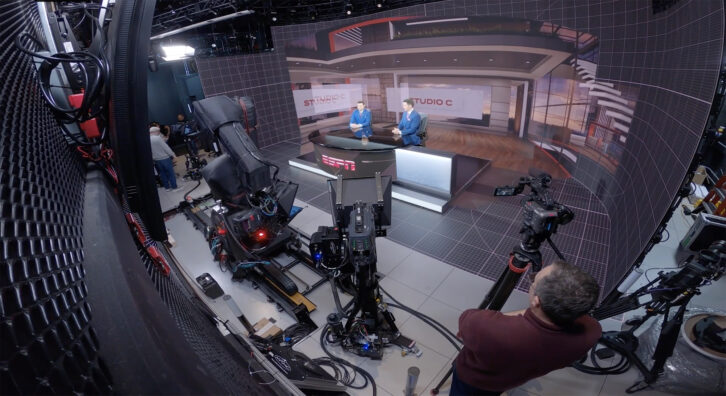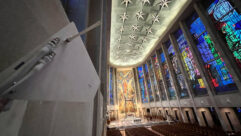
ESPN’s groundbreaking new studio blends physical space with a variety of virtual production technologies that the company says will open up new frontiers in the way it produces content while providing it with more flexibility in the way it scales studio operations and tells stories.
That makes the studio a notable example of how virtual production technologies are beginning to radically transform live production.
“Our new Catalyst Stage showcases the ingenuity of the Disney Entertainment & ESPN Technology team, expanding the boundaries of production and elevating the canvas of possibilities for content creation,” explained Aaron LaBerge, President & CTO, Disney Entertainment & ESPN Technology. “While we are introducing this at ESPN, Catalyst Stage will enable new opportunities in advertising, and showcases the extraordinary capabilities we are advancing for the entire Walt Disney Company.”
The new Catalyst Stage studio builds on some of the pioneering virtual production technologies used by Disney’s “The Mandalorian” and is being billed by ESPN as a first of its kind to support both live multi-camera productions & cinematic-quality projects.
The studio is designed to create day-to-day live, multi-camera, augmented reality, and extended reality productions in 1080p or UHD, and cinematic-quality and advertising projects in 4K.
Powered by proprietary software developed by Disney Entertainment & ESPN Technology teams, it also makes novel use of technologies from Ghostframe, Unreal Engine, Disguise XR, Pixotope, and Mark Roberts Motion Control (robotic) camera systems.
 It is ESPN’s first all robotic camera studio, the company said. With 26 real-time servers at work, Catalyst Stage renders 11 million pixels, refreshes 7.6 thousand times every second, and uses the largest and most complex Disguise XR system ever built for television production, ESPN said.
It is ESPN’s first all robotic camera studio, the company said. With 26 real-time servers at work, Catalyst Stage renders 11 million pixels, refreshes 7.6 thousand times every second, and uses the largest and most complex Disguise XR system ever built for television production, ESPN said.
Their ability to process 120 gigabytes of data every second also allows for very high-resolution visuals and allows it to process 4K video tracking data from each robotic camera plus any additional graphics and imagery and passing all that information to the LED wall in one piece.
The new stage also breaks down and eliminates the old limitations attached to the access, building, and changing of physical environments. Complex sets that once took weeks or months to stand up or alter can now come together in days, or even hours, ESPN reported.
“Catalyst Stage removes production and creative limitations that come with singular, purely physical environments,” Tina Thornton, head of content operations and creative Surround, ESPN said. “In this studio, we can place our show and talent anywhere – the top of a skyscraper, a virtual twin of an existing studio, a newly-created fully-rendered studio, or the middle of a football field…you name it. If we imagine a setting, we can create it. And it allows rapid scalability in live, custom cinematic-quality, and advertising productions.”
Production, operations, and creative teams can easily and efficiently operate Catalyst Stage by using Disney’s proprietary technology to select and move amongst multiple studio environments.
Disney also stressed that the deployment of these technologies at ESPN is the first of other deployments at other Disney-owned operations.










